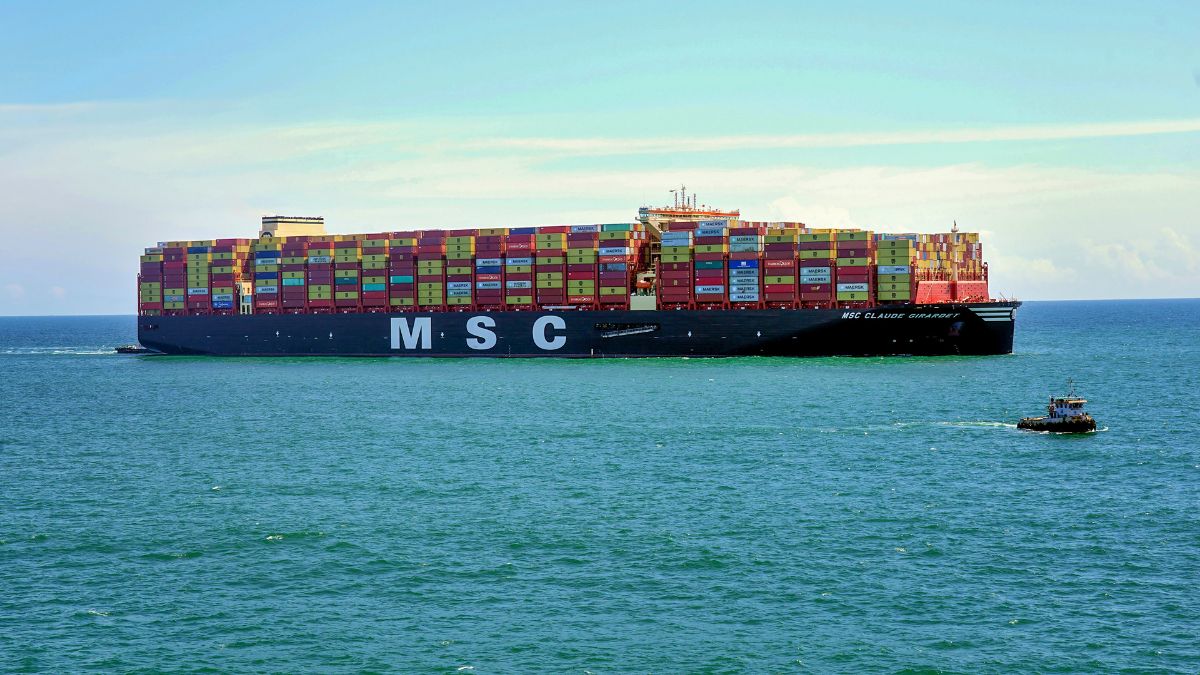Prime Minister Narendra Modi has formally commissioned India’s first deep-sea transshipment port at Vizhinjam in Kerala. Built at a whopping cost of about Rs 8,900 crore, the seaport will put the country on the global maritime trade map.
The Vizhinjam International Deepwater Multipurpose Seaport began commercial operations last December. It has since handled 285 ships and 5.48 lakh Twenty-foot Equivalent Units (TEU), including MSC Turkiye – one of the largest cargo ships in the world.
Let’s take a closer look.
Features of Vizhinjam port
The Vizhinjam port is India’s first deepwater container transshipment port – where cargo containers are transferred from one vessel to another before reaching their final destination.
The seaport has a natural deep draft of nearly 20 meters. Its location is close to the international shipping routes and is the only transshipment hub in the Indian subcontinent.
Built under a public-private partnership (PPP), the port is developed and operated by the Adani Group, while the Kerala government holds the 61.5 per cent majority stake and the Centre holds 9.6 per cent.
Inauguration of the Vizhinjam Port in Kerala is significant for India’s maritime sector. People have been waiting for this port for many years. It will boost trade, commerce and will be particularly beneficial for Kerala’s economy.
— Narendra Modi (@narendramodi) May 2, 2025
Here are glimpses from today’s programme in… pic.twitter.com/T1QQ00AvSA
In the first phase, Adani Vizhinjam Port Private Limited (AVPPL) has constructed a 3,000-metre breakwater and an 800-metre container berthing facility, reported Fortune India.
With 30 berths, the port can currently host one million (10 lakh) containers every year. The four phases of the seaport project are expected to be completed by 2028-29, after which its capacity to handle containers will expand to 6.2 million (62 lakh) TEUs.
Located just 10 nautical miles from the east-west global shipping lane, the Vizhinjam port has a major advantage over other ports such as Colombo and India’s Mundra port.
Trial run at the port in Kerala began last July, while commercial operations commenced on December 3, 2024.
Why was the Vizhinjam port needed?
India did not have a deepwater container transshipment port until now. Due to a lack of such ports to host large vessels, the South Asian country’s nearly 75 per cent of maritime trade is transshiped through foreign ports such as Sri Lanka’s Colombo, Singapore, Jebel Ali in the United Arab Emirates (UAE) and Salalah (Oman).
The dependence on international transshipment ports is costly and could increase transit time. Domestic traders pay an additional $80 (Rs 6,720) to $100 (Rs 8,401) per container, as per Indian Express.
India reportedly spends an estimated $200–220 million (Rs 1,682-1,850 crore) annually on transhipment.
ALSO READ: How did China come to dominate global shipping?
The importance of Vizhinjam seaport
Vizhinjam port can revamp the face of India’s maritime trade. It will boost India’s standing in global trade, enhance logistics efficiency and reduce reliance on foreign ports for cargo transhipment, the government said in a statement.
The port’s natural depth is more than 20 metres, which enables it to handle even Ultra-Large Container Vessels (ULCVs) like MSC Türkiye without extensive dredging. This can help India save on the high costs spent on the process to deepen shallow ports.
The deepwater port can receive huge “mother vessels”, carrying as many as 20,000 containers. Its connectivity to a national highway, rail line and Trivandrum airport is an added advantage, ensuring cargo can move easily across India.
“From 3 December, the gateway of India has shifted 1,600 km south to Trivandrum. India’s contribution to global merchandise exports is just 2 per cent. The inefficiency is in our logistics system, whether it’s on our rail, air, or sea, Vizhinjam changes all of that,” an official at Vizhinjam International Seaport Limited (VISL) told ThePrint on the condition of anonymity.
The port’s closeness to international shipping routes is significant, as nearly 30 per cent of the freight movement occurs through these global lanes south of the Indian peninsula, as per Business Standard.
The Vizhinjam port has also brought job opportunities for the locals. A senior official told Indian Express that 755 people have been employed at the port.
“At present, approximately 67 per cent of the workforce is from Kerala, with 57 per cent from Thiruvananthapuram district alone. Besides, 35 per cent are specifically from the local region. We have employed nine women, particularly from the local fishing community, to operate large automated CRMG (Cantilever Rail Mounted Gantry) cranes. This is the first time in any Indian port that women are operating such machinery,” said the official.
As per ThePrint, Kerala is hoping the port will bring more investment and development to the state, luring Keralites working overseas to return home.
After Vizhinjam becomes fully operational, it can help increase India’s competitiveness in global trade. As PM Modi said, the port will “boost trade, commerce and will be particularly beneficial for Kerala’s economy”.
With inputs from agencies


)

)
)
)
)
)
)
)
)



